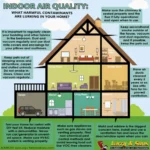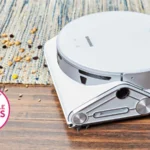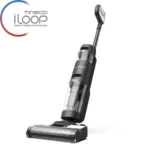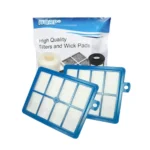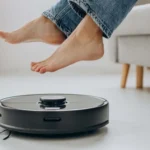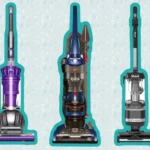Introduction
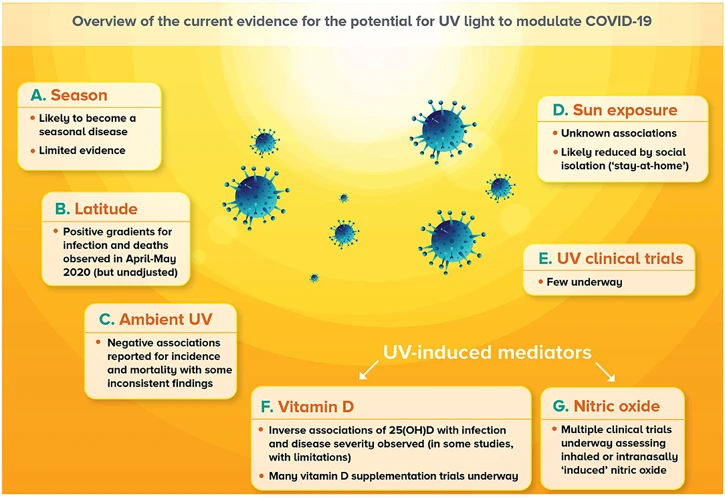
As a society, we are constantly searching for ways to improve the health and well-being of ourselves and our loved ones. With the prevalence of allergies and asthma on the rise, people are desperately seeking relief from these debilitating conditions. Fortunately, there is a powerful new tool in the fight against allergens that is gaining popularity: UV-C light. In this article, we’ll explore the science behind UV-C light and its amazing potential to improve indoor air quality and alleviate allergy and asthma symptoms. We’ll delve into the basics of UV-C light, how it works, and the many benefits it has to offer. So let’s get started!
Overview of the Article
In this article, we will explore the science behind UV-C light and its remarkable benefits in fighting allergies and asthma. This article will give you a step-by-step guide to understanding the basics of UV-C light, how it works to reduce allergens in your home, and how you can use it safely and effectively. We will also look at the exciting new developments in UV-C technology and the potential impact on allergy and asthma treatment. Here is what you can expect to find in this article:
1. The Basics of UV-C Light: we will describe what UV-C light is, how it works and the benefits of using it over traditional methods of air purification.
2. How UV-C Light Fights Allergies: this section focuses on the role of allergies and asthma in the home and how UV-C light can help reduce allergens.
3. Using UV-C Light in Your Home: we will explore popular home UV-C devices, how to use them safely and effectively, and other benefits of using UV-C light in your home.
4. Future of UV-C Light Technology: this section covers the latest developments in UV-C technology and discusses what the future may hold for UV-C light and its role in allergy and asthma treatment.
This article will provide you with a comprehensive understanding of the science behind UV-C light and how it can benefit those who suffer from allergies and asthma. By the end of this article, you will have a clear idea of how to maximize the benefits of UV-C light and its potential to improve your quality of life. Stay tuned for more exciting information!
The Basics of UV-C Light
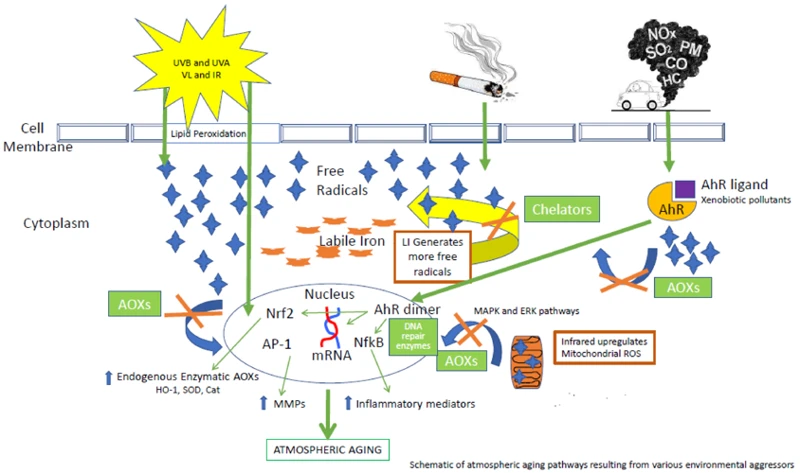
UV-C light is a powerful tool in the fight against allergies and asthma. Understanding how it works and its benefits is the first step in using it effectively. UV-C light is a type of ultraviolet light that is often used to kill germs and other harmful particles in the air, water, and surfaces. It works by breaking down the DNA or RNA of microorganisms, which prevents them from reproducing and causes them to die. In this section, we will discuss the basics of UV-C light and its benefits in more detail. If you want to learn about how UV-C light can be used in conjunction with other tools such as HEPA filters, you can check out our article “UV-C Light vs HEPA Filters for Allergies and Asthma: Which is Better?“.
What is UV-C Light?
UV-C light is a type of ultraviolet light that has been found to be effective in reducing the spread of allergens and germs. This type of light has the shortest wavelength and highest frequency of all ultraviolet lights. It operates within the range of 100 to 280 nanometers and is capable of breaking down the DNA of bacteria and viruses.
UV-C light is a powerful disinfectant that can be used to purify air, water and surfaces. It is used in a variety of settings such as hospitals, laboratories, and food processing plants. UV-C light technology has also begun to be used in homes to help control the spread of germs and allergens.
UV-C light is different from UV-A and UV-B light, which are found in natural sunlight. UV-A and UV-B light can cause skin damage and increase the risk of skin cancer. However, UV-C light is not harmful to humans when used properly.
The use of UV-C light has been found to be effective in reducing the spread of germs and allergens in the home. Studies have shown that UV-C light has the ability to kill up to 99.9% of microorganisms that can cause illness. This includes viruses, bacteria, and mold.
UV-C light is also effective in reducing the spread of allergens in the home. Allergens such as dust mites, pet dander, and pollen can trigger allergic reactions and asthma attacks. UV-C light has been found to be effective in reducing the concentration of airborne allergens.
UV-C light can be used in a variety of applications to reduce the spread of germs and allergens. It can be used in HVAC systems to purify indoor air, in water treatment systems to purify drinking water, and on surfaces to disinfect surfaces.
UV-C light is a powerful tool in the fight against germs and allergies. Its ability to kill microorganisms and reduce the concentration of airborne allergens make it a valuable asset in the home. UV-C light devices for home use are becoming widely available so that homeowners can take advantage of the benefits of UV-C light. If you are looking to improve your indoor air quality, consider investing in a UV-C light device for your home. For more information about the benefits of UV-C light in the home, visit this link.
How Does UV-C Light Work?
UV-C light works by disrupting the DNA of germs, viruses, and bacteria, rendering them unable to reproduce and causing them to die. This process is called germicidal irradiation. When exposed to UV-C light with a wavelength between 200-280 nanometers, these microorganisms are bombarded with photons which penetrate their outer structure, ultimately causing damage to their DNA. This damage prevents their ability to replicate and propagate, hence limiting the spread of infection.
It is important to note that UV-C light doesn’t actually kill allergens or asthmatic triggers. Rather, it eliminates the source of the problem by killing the microorganisms that cause them. By minimizing the amount of these triggers in our environment, we can help reduce the likelihood of allergic reactions or asthma attacks.
This method of cleaning with UV-C light is becoming increasingly popular in residential and commercial spaces. It is especially helpful in areas where it is not feasible to use traditional cleaning methods, such as regular disinfectants or bleach. Additionally, using UV-C light can help prevent the development of drug-resistant bacteria, which can pose a major challenge in healthcare facilities.
However, it is important to use UV-C light properly to maximize its effects. For best results, a specialized device employing UV-C light should be used for a certain amount of time within a specified distance from the target surface. This ensures the right amount of exposure time and intensity required to achieve optimal results.
The science behind UV-C light is clear. It effectively disposes of germs, viruses, and bacteria by disrupting their DNA, rendering them unable to reproduce and causing them to die. As a result, cleaning with UV-C light can help alleviate various allergy and asthma symptoms by reducing the number of triggers present in our environments. To ensure maximum effectiveness, it is crucial to use devices designed for UV-C light cleaning and to do it safely.
| Pros | Cons |
|---|---|
| Effective at killing germs and reducing allergens | Can be harmful if not used properly |
| Does not require chemical disinfectants | Can only be used on surfaces directly exposed to the light, so it may not be able to clean hard-to-reach areas |
| Can help prevent drug-resistant bacteria | May be expensive to install specialized devices |
UV-C light is a powerful tool in the fight against germs, allergens, and asthma triggers. By understanding how it works, we can take advantage of its benefits to make our homes and workplaces safer and healthier. Additionally, with new advancements in technology, combined with safe and effective use guidelines, UV-C light may prove to be an even more important tool in allergen and asthma relief in the future.
Benefits of Using UV-C Light
UV-C light has an abundance of benefits that make it an excellent option for reducing germs and allergens in your home environment. Here are some of the key benefits of using UV-C light:
| Benefits | Description |
|---|---|
| Kills Germs: | UV-C light is effective in killing germs and bacteria in your home, including pathogens like E. coli and Salmonella. It can also help reduce the spread of cold and flu viruses. |
| Reduces Allergens: | UV-C light can help reduce allergens in your home, including pet dander, dust mites, and pollen. This can be especially beneficial for those with allergies or asthma. |
| Chemical-Free: | UV-C light is a chemical-free cleaning solution, making it a safe and eco-friendly option for cleaning and sanitizing your home. |
| Easy to Use: | UV-C light devices are easy to use and require minimal effort on your part. Simply plug in the device and let it do its work. |
| Cost-Effective: | While UV-C light devices may have a higher upfront cost than traditional cleaning products, they are a cost-effective solution in the long run, as you won’t need to continually purchase cleaning supplies. |
UV-C light is an excellent option for those looking for an effective, chemical-free, and easy-to-use solution for keeping their home environment clean and healthy. For more information on how UV-C light can help kill germs in your home, check out our article on How UV-C Light Can Be an Effective Germ-Killer in Your Home.
How UV-C Light Fights Allergies
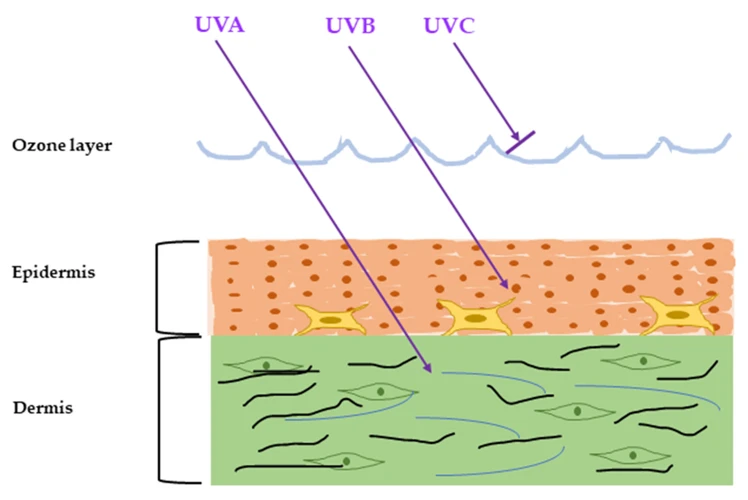
Allergies and asthma are common respiratory issues that can greatly affect a person’s quality of life. They can be triggered by various allergens, including dust mites, pollen, mold, and pet dander. While there are many ways to manage these conditions, UV-C light is an increasingly popular technology that has been shown to reduce allergens effectively. In this section, we will explore the science behind how UV-C light fights allergies and its potential as a solution for allergy and asthma sufferers.
The Role of Allergies and Asthma
Allergies and asthma are two chronic respiratory conditions that can cause discomfort and distress to individuals who suffer from them. These conditions affect millions of people worldwide, with allergies affecting approximately 30% of the global population and asthma affecting about 10% of the global population.
Allergies occur when the immune system overreacts to a harmless substance, such as dust, pollen, or pet dander. When an allergen enters the body, the immune system produces antibodies, which attach to cells in the body and release chemicals, such as histamine, that cause the allergic reaction. Common symptoms of allergies include runny nose, sneezing, itching, and hives.
Asthma is a chronic respiratory condition that causes inflammation and narrowing of the bronchial tubes, which carry air in and out of the lungs. This inflammation makes it difficult for air to flow in and out of the lungs, causing breathlessness, wheezing, and coughing. Asthma attacks can be triggered by various factors, such as allergens, pollution, and exercise, and can be life-threatening if left untreated.
Both allergies and asthma can significantly impact an individual’s quality of life and productivity. Allergies can cause fatigue, headaches, and difficulty concentrating, while asthma can lead to decreased physical activity and missed school or work days.
In recent years, UV-C light technology has emerged as a promising method to alleviate the symptoms of allergies and asthma by reducing allergens in the air. By targeting the DNA of germs, bacteria, and allergens, UV-C light can effectively destroy these particles, thus reducing the risk of triggering allergy and asthma symptoms.
How UV-C Light Can Reduce Allergens
When it comes to reducing allergens, UV-C light can be a valuable tool in your arsenal. By targeting the DNA of microorganisms, this type of light is able to eliminate bacteria, viruses, and other harmful pathogens that can trigger allergies and asthma symptoms. Here are a few ways UV-C light can help reduce allergens in your home:
1. Kills Dust Mites: Dust mites are a common allergen that can live in bedding, carpets, and other soft surfaces. Exposing these areas to UV-C light can effectively kill dust mites and prevent them from reproducing.
2. Destroys Mold Spores: Mold spores are another allergy trigger commonly found in damp areas like bathrooms and basements. UV-C light can destroy these spores and prevent them from spreading throughout your home.
3. Neutralizes Pet Dander: For those with allergies to pets, UV-C light can be a lifesaver. It can neutralize the proteins found in pet dander, which is what triggers allergic reactions in many people.
4. Eliminates Airborne Pathogens: UV-C light can be installed in your HVAC system to neutralize airborne pathogens like viruses and bacteria. This can be especially beneficial during cold and flu season when these germs can easily spread.
To fully embrace the benefits of UV-C light, it’s important to invest in high-quality UV-C devices for your home. There are many options available on the market, including handheld wands, air purifiers with UV-C technology, and vacuum cleaners with UV-C lights built-in. By using these devices safely and effectively, you can reduce allergens in your home and breathe easier.
| Benefits of using UV-C light to fight allergens |
|---|
| Kills dust mites |
| Destroys mold spores |
| Neutralizes pet dander |
| Eliminates airborne pathogens |
Results of UV-C Light Technology
UV-C light technology has been extensively researched and tested over the years, and its effectiveness in reducing allergens and asthma triggers has been proven. Let’s take a look at some of the results of UV-C light technology:
| Study | Results |
|---|---|
| A study published in the Journal of Environmental Health | showed that UV-C technology was able to reduce viral contamination by up to 99% in a classroom setting |
| Another study conducted by researchers at the University of Minnesota | found that using UV-C light in HVAC systems resulted in a significant reduction of mold and bacteria, ultimately improving indoor air quality and reducing the risk of respiratory issues |
| Research published in the Journal of Allergy and Clinical Immunology | showed that using UV-C light eliminated over 90% of mold spores in a room, significantly reducing the risk of allergic reactions and respiratory issues |
| A study conducted by researchers at the University of Colorado | found that using UV-C light technology on surfaces reduced the number of bacteria by up to 97%, significantly improving overall hygiene levels in the home or workplace |
These results highlight the effectiveness of UV-C light technology in reducing allergens, mold, and bacteria in homes and other indoor spaces. With such promising results, it’s no wonder why this technology has become increasingly popular among those seeking relief from allergies and asthma.
Using UV-C Light in Your Home

When it comes to improving the air quality in your home, UV-C light is a powerful tool that can help reduce allergens and irritants. But how can you use UV-C light effectively in your home? In this section, we’ll dive into the various ways you can incorporate UV-C devices into your everyday routine, as well as tips for staying safe while doing so. Let’s explore the world of UV-C light and how it can benefit your home.
UV-C Devices for Home Use
UV-C devices are becoming increasingly popular for home use, as they are highly effective at fighting allergies and asthma. There are several types of UV-C devices available on the market that can be used in the home. Here are some of the most common:
- UV-C Air Purifiers: These devices use UV-C light to kill airborne viruses, bacteria, and germs, making the air in your home cleaner and healthier to breathe.
- UV-C Vacuum Cleaners: These devices use UV-C light to kill allergens and bacteria that are found in carpets and other surfaces in your home. They are highly effective at reducing the amount of harmful allergens in your home.
- UV-C Water Purifiers: These devices use UV-C light to kill bacteria and other harmful microorganisms that are found in water. They are a great way to ensure that your drinking water is safe and clean.
- UV-C Sanitizers: These devices use UV-C light to sanitize surfaces and kill harmful bacteria and viruses. They are great for use in the kitchen and bathroom, where bacteria and germs can easily spread.
Using these devices in your home can be highly effective at reducing the amount of allergens and other harmful particles in the air you breathe and the surfaces you touch. However, it’s important to use these devices safely and effectively to get the best results. Be sure to follow the manufacturer’s instructions carefully and use the device as directed.
While UV-C devices are highly effective, they should not be used as a replacement for traditional cleaning and hygiene practices. Regular cleaning and disinfecting of your home is still essential to maintaining a healthy and safe living environment.
How to Use UV-C Light Safely and Effectively
When using UV-C light devices in your home, it is important to follow proper safety measures to avoid potential harm. Here are some tips for using UV-C light safely and effectively :
- Wear protective gear, such as gloves and goggles, when using UV-C devices.
- Keep the room well-ventilated to prevent the buildup of ozone, which can be harmful to your respiratory system.
- Do not expose yourself or others to direct UV-C light, as it can cause skin and eye damage.
- Make sure to follow the manufacturer’s instructions for the specific device you are using.
- Use UV-C devices on surfaces and objects, not on people or animals.
- Keep UV-C devices away from children and pets.
- Use UV-C devices as part of a comprehensive cleaning routine, not as a sole cleaning method.
When used properly, UV-C light can be an effective tool for reducing allergens and improving indoor air quality. It is important to use UV-C light carefully and always follow safety guidelines to avoid any potential harm.
Other Benefits of Using UV-C Light in the Home
While UV-C light is primarily known for its ability to fight allergies and asthma, it also provides a host of other benefits for homeowners. Let’s take a look at some of the lesser-known benefits of using UV-C light in your home.
Other Benefits of Using UV-C Light in the Home
| Benefit | Description |
|---|---|
| Eliminates Mold and Bacteria | UV-C light effectively kills mold spores and bacteria. This helps improve overall air quality and may reduce the spread of illness in the home. |
| Reduces Odors | UV-C light can break down volatile organic compounds (VOCs), which are often responsible for unpleasant odors in the home. This results in fresher, cleaner air. |
| Extends HVAC Life | By reducing the amount of dust and other debris that builds up on HVAC system components, UV-C light can help extend the life of your heating and cooling system. |
| Improves Energy Efficiency | When HVAC systems are clean and free of debris, they can operate more efficiently. This can lead to lower energy bills and a smaller carbon footprint. |
| Reduces Allergy Symptoms | In addition to reducing allergens in the air, UV-C light can also help reduce allergy symptoms such as coughing, sneezing, and itchy eyes. |
As you can see, the benefits of UV-C light extend beyond allergy and asthma relief. By eliminating mold and bacteria, reducing odors, extending HVAC life, improving energy efficiency, and reducing allergy symptoms, UV-C light can make your home a healthier, more comfortable place to live. It’s important to note, however, that proper use and maintenance of UV-C devices is crucial for ensuring their effectiveness and safety.
Future of UV-C Light Technology
As scientists and researchers continue to explore the potential of UV-C light technology, the future looks bright for those who suffer from allergies and asthma. Exciting new developments are on the horizon, offering hope for even more effective relief. From cutting-edge devices to potential new treatment options, the possibilities are endless. Join us as we explore the future of UV-C light technology and its potential to transform the way we cope with allergy and asthma symptoms.
Exciting New Developments in UV-C Light Technology
In recent years, researchers have been exploring new ways to harness the power of UV-C light technology to combat allergies and asthma. Here are some of the exciting new developments in this field:
1. Active Air Purification
One of the newest and most promising developments in UV-C light technology is the use of active air purification systems. These systems use UV-C light to not only kill airborne allergens and pathogens, but also to break down organic compounds and neutralize odors. As a result, they offer a more comprehensive solution for improving indoor air quality.
2. Handheld UV-C Sanitizers
Another exciting development in UV-C light technology is the availability of handheld sanitizers that use UV-C light to kill germs and bacteria on the go. These devices are small and portable, making them ideal for use in public places where viruses and bacteria are common, such as airports and train stations.
3. Smart UV-C Lighting
Smart UV-C lighting is a new technology that allows for the targeted use of UV-C light in specific areas of a room, rather than treating the entire space. This not only saves energy, but also allows for more effective disinfection of high-touch surfaces, such as countertops and doorknobs.
4. Wearable UV-C Devices
Finally, researchers are exploring the use of wearable UV-C devices that can be worn on clothing or attached to personal items, such as cell phones and keys. These devices use UV-C light to kill germs and bacteria on surfaces that we touch most frequently, helping to reduce the spread of illness.
As these new developments in UV-C light technology continue to emerge, it’s clear that this powerful tool will play an increasingly important role in the fight against allergies and asthma. Whether you’re looking for a comprehensive air purification system for your home or a portable sanitizer to take on-the-go, there’s a UV-C light solution that can help improve your indoor air quality and reduce your risk of allergy and asthma symptoms.
Potential Impact of UV-C Light on Allergy and Asthma Treatment
UV-C light has shown promising potential as a treatment for allergy and asthma. The therapy involves exposing the patient to controlled levels of UV-C light, which can help to reduce the presence of allergens in the air and in turn, alleviate the symptoms of these respiratory conditions.
The Potential Impact of UV-C Light Therapy on Allergy and Asthma Treatment
| Pros | Cons |
| ———————————————————— | ———————————————————— |
| – UV-C light therapy may provide a non-invasive, drug-free approach to allergy and asthma relief. | – There is still limited research on the long-term effects and safety of UV-C light therapy on allergy and asthma treatment. |
| – UV-C light therapy can be implemented in various settings, including the home or healthcare facilities. | – UV-C light therapy may not be effective for all individuals with allergies or asthma, as the severity and triggers of respiratory conditions vary. |
| – UV-C light therapy may be a cost-effective alternative to traditional treatments, such as medications or air purifiers. | – The equipment and initial setup costs of UV-C light therapy may be high for individuals or healthcare facilities. |
| – UV-C light therapy has the potential to reduce the use of medications and other treatments which may have negative side effects. | – UV-C light therapy is not yet widely available as an allergy and asthma treatment and may require specific expertise and training. |
It is important to note that research on the use of UV-C light therapy for allergies and asthma is ongoing, and more studies are needed to fully understand the potential benefits and drawbacks of this treatment option. However, UV-C light therapy presents an intriguing alternative to traditional treatments and may offer relief for those suffering from allergies and asthma.
Conclusion
As we come to the end of this comprehensive article on the science behind UV-C light and its role in fighting allergies and asthma, it’s clear that this technology has the potential to make a significant impact on our daily lives. The benefits of using UV-C light to reduce allergens and improve air quality are numerous, and with the development of new devices and technologies, we may see even more exciting advancements in the future. So, let’s wrap up with some final thoughts on what we’ve learned and how we can incorporate UV-C light into our homes and lives for a healthier future.
Final Thoughts on the Science Behind UV-C Light and its Role in Allergy and Asthma Relief
UV-C light has proven to be an effective and safe technology in reducing allergens and asthma triggers inside the home. By using UV-C technology, individuals with allergies and asthma can significantly improve their quality of life by reducing their symptoms and breathing difficulties.
It is important to remember that UV-C technology should be used as a complementary therapy and not a replacement for traditional forms of treatment. Those with severe allergies or asthma should continue to seek medical advice and follow their doctor’s recommendations for treatment.
When using UV-C devices in the home, it is crucial to follow safety guidelines and manufacturer’s instructions. While UV-C light has been proven effective in reducing allergens and bacteria, it can also be harmful if not used correctly. Always wear protective eyewear and avoid direct exposure to skin and eyes when using UV-C devices.
The science behind UV-C light and its role in allergy and asthma relief is promising. While more research is needed to fully understand the potential impact of this technology on treatment and prevention, it is clear that UV-C light can provide relief for those suffering from allergies and asthma. Through proper use and safety precautions, UV-C technology can help improve indoor air quality and overall health for individuals with respiratory issues.
Frequently Asked Questions
Can UV-C light help with allergies and asthma?
Yes, UV-C light can help reduce allergens in the environment, which can alleviate allergy and asthma symptoms.
What are the potential safety concerns with UV-C light?
UV-C light can be harmful to skin and eyes, so it is important to use it safely and appropriately.
How can I use UV-C light in my home?
There are various UV-C devices for home use, such as air purifiers and handheld wands. It is important to follow instructions carefully and use the devices safely.
What are some other benefits of using UV-C light in the home?
In addition to reducing allergens, UV-C light can also help eliminate odors and kill bacteria and viruses.
What types of allergens can UV-C light eliminate?
UV-C light can eliminate various types of allergens, including dust mites, pet dander, and pollen.
How does UV-C light compare to traditional allergy medication?
UV-C light can be an effective alternative for allergy relief, as it addresses the root cause of allergies by reducing allergens in the environment.
What is the difference between UV-A, UV-B, and UV-C light?
UV-C light has the shortest wavelength and is the most powerful type of UV light. It can effectively kill bacteria and eliminate allergens.
Can UV-C light be harmful to pets?
While UV-C light can be harmful to pets if they are exposed to it for prolonged periods, using UV-C devices as directed in the home should not pose a significant risk to pets.
Do I need to wear protective gear when using UV-C light devices?
It is recommended to wear protective eyewear and avoid prolonged exposure to UV-C light when using UV-C devices.
How often should I use UV-C light devices in my home?
The frequency of use will depend on individual needs and the size of the space being treated. It is important to follow manufacturer recommendations and not overuse UV-C devices.

